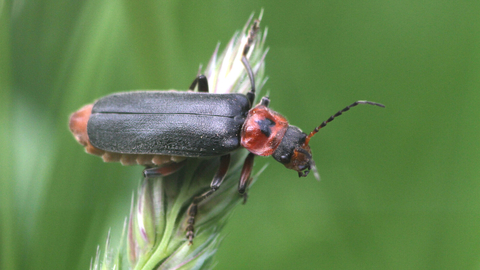
Soldier beetle, Cantharis rustica © Tom Hibbert
Soldier beetle
Scientific name: Cantharis rustica
One of our largest soldier beetles, often found on flowers where they hunt other insects.

Soldier beetle, Cantharis rustica © Tom Hibbert